Am I protecting the wildlife in my backyard well? How could I further conserve biodiversity in my garden? As the weather got sunny and we spent a lot of time in the garden recently, these were the questions that I explored last week.
I first looked at the actions we were already taking to conserve biodiversity in the garden. This is what I usually do when I try a new going-green theme. We inherited a big garden that had many trees and a rich variety of flora. The previous owners had already installed a little houses to feed birds in the garden.
As discussed in my blog post on growing our own food, I planted an edible hedgerow that is great for wildlife. Last year, I also planted many local annual flowers that are great for bees. In my previous post on where to buy new eco-friendly clothing I also explain that we bought T-shirts from WWF boutique. And the benefice this WWF shop makes will go for protecting wildlife.
When I caught my husband cutting ivy on our carport, I also asked him to let it continue growing and climbing in the future. Research has recently shown that although people have long thought of ivy as destroying walls, it actually appears to be good for walls. And it is very important as food and habitat for wildlife.
As explained in my post on better recycling, I also set up kitchen compost. In general, I take composting in my garden much more seriously than before. This week, to conserve biodiversity in my garden even more, I carried out these seven actions:
Cut grass less and later
The UK National Trust recommends letting the grass grow tall in at least some parts of your garden as a way how to conserve biodiversity. I already did this some last year, but this year I will let larger patches of grass grow. Mostly, I do not mow the grass around trees and the corners of my garden, creating a natural refuge for biodiversity. The European Commission has put together 52 tips for biodiversity, a great simple yet comprehensive guide to follow. They also emphasise the importance of late mowing. Before, I would have started to mow already by now. Yet this year, I will wait a month or two longer. In addition, this allows me to enjoy the many blooming spring flowers in my lawn:

Put more nest boxes
As I explain in my post on green parenting mistakes to avoid, my oldest son Lev developed a pretty severe eco-aversion after some months of my going-green activities. I was thus so happy when, in the supermarket, he went and picked up wooden nest box. I could not believe that Lev said that he would like to buy that and put into our garden! Bird boxes are also on the list of UK National Trust suggestions for how to conserve biodiversity in the garden. So now we have this cute nest box waiting for a new bird family:

How to conserve biodiversity: preserve a dead tree
I found this suggestion in the European Commission’s tips for biodiversity. I used to want to cut away not just all dead trees, but even all dead branches on the trees. In my view, they looked untidy and unattractive. Thus, leaving a dead tree was quite an effort for me
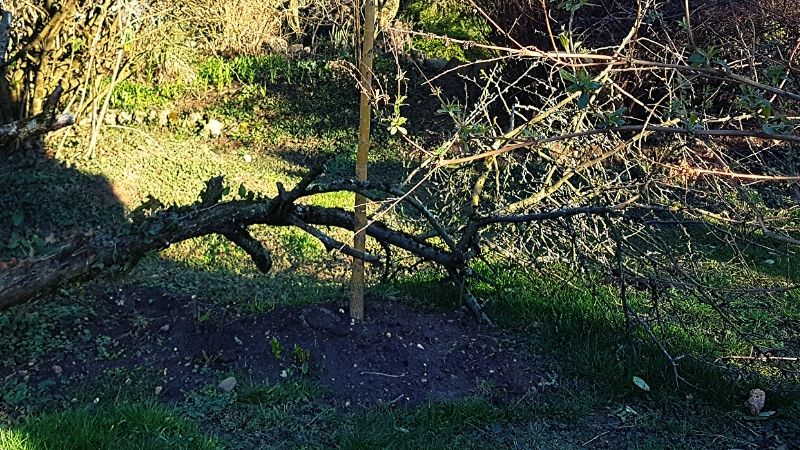
I also planted a Weeping Willow inside the dead tree.
And then also part of this birch tree:
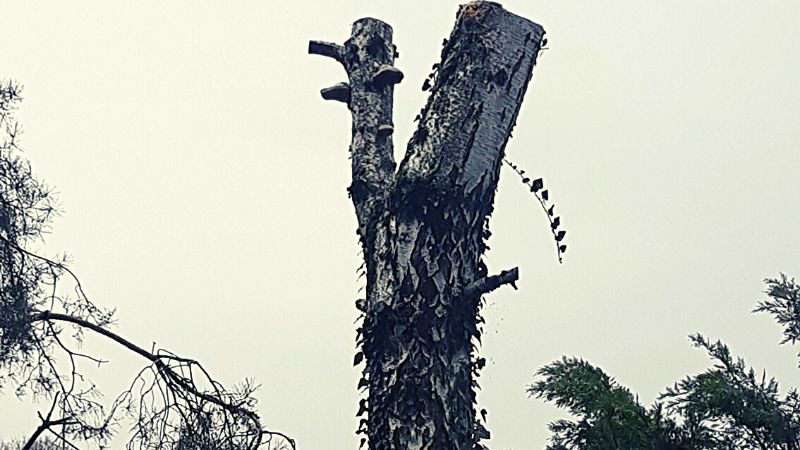
I initially left the whole tree. Yet as it was so dried out, it broke during a storm, and one morning I found it all broken in my garden.
Embrace dandelions and other weeds
When I was very little, I thought dandelions were so pretty! Then I got into gardening, and my world was turned upside down – dandelions were weeds to be killed! Yet apparently they help bees and other pollinators. Therefore, I decided to let the dandelions bloom between my perennials. I only remove the seed heads so that they do not take over my flowerbed. In general, I let all weeds that have beautiful grow in my flowerbeds. I weed them out only after they have finished with their blooms. And as of this year, I have also a different policy for nettles: I let them grow as they please! Despite their bad reputation, according to BBC Gardener’s World, these plants are beneficial in many ways, including for butterflies and ladybirds.

Volunteer for local community wildlife protection
Amazing coincidence: last week, someone I know spread the word about a yearly earth-friendly activity in a neighbouring village. More concretely, volunteers spend one month helping frogs to get safely to their reproduction sites. There is a road nearby where previously hundreds of frogs got killed every year. The local authorities now put special nests beside certain patches of roads. In spring, volunteers go regularly throughout one month to take the frogs from the nests and safely bring them to ponds. This video (in French) tells about the action.
I signed up with my two older boys to go to help frogs during the next intervention, another way how to conserve biodiversity.
Plant more annual flowers that attract pollinators
Although I already took this step to certain degree over the last two years, I knew that I could do more in my garden. Over last few weeks I created this rock bed in my garden:
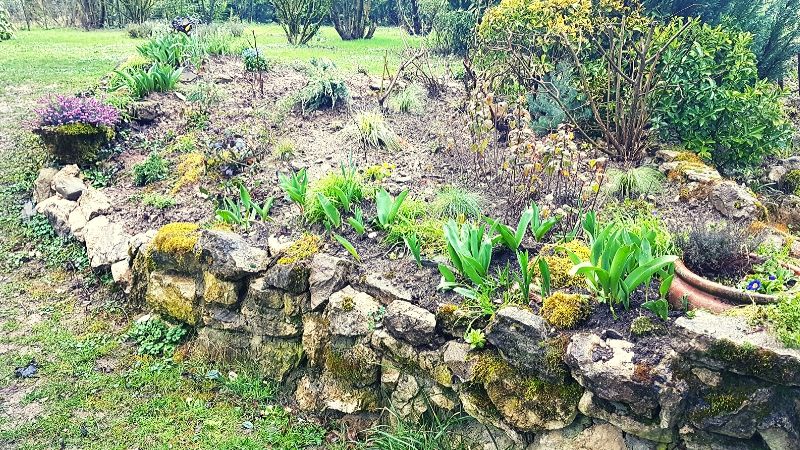
After having planted perennials, I decided to test and plant some annuals that are great for bees. I chose cornflower as it is suggested for helping bees in colder periods. I also planted flax and lavender into this blue-to-be rock bed.
Explore into setting up a pond
At first this idea did not appeal to me, as I was afraid for kids to fall into the pond. My little one is only two years old, and a pond seemed like just another danger spot to be vigilant about. However, both the UK National Trust and the European Commission suggest setting up a pond. Also, some friends who had done this were really happy and had attracted lizards and frogs to their gardens. When I looked into this in our ecological garden shop Botanic, I found a great basin that is not very deep that I could set up. This is what I will be up to in next few weeks, and I will keep you posted on how it goes!
What about you – how have you tried to conserve biodiversity in your garden and community?

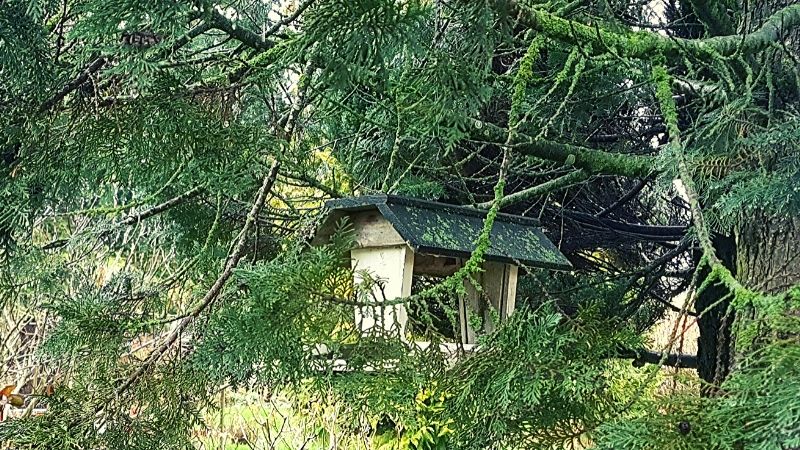

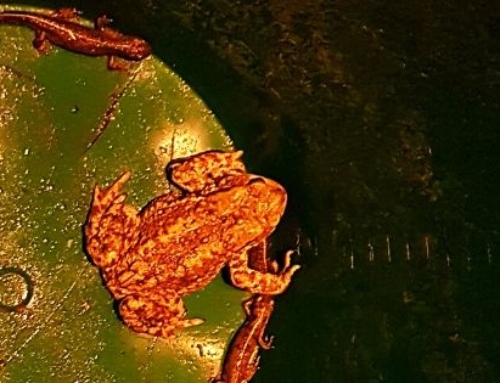
Ilus aed!:-)
Aitäh Viive! Olen Sinult palju ôppinud 🙂